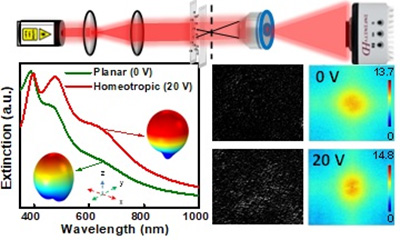 Scientists have crafted a new material with the ability to tune electromagnetic (EM) waves dynamically to scatter in one direction, which can be used in thin-film based solar cells, optoelectronic devices, and anti-reflection coating.
Scientists have crafted a new material with the ability to tune electromagnetic (EM) waves dynamically to scatter in one direction, which can be used in thin-film based solar cells, optoelectronic devices, and anti-reflection coating.
Scattering of electromagnetic (EM) waves find immense applications in optics and material science. Artificially crafted materials having a property that is not found in naturally occurring materials, technically called metallic meta-materials with an intrinsic electric dipole, are tweaked with an artificial magnetic dipole to realize forward scattering. However, they exhibit high intrinsic losses due to absorption and thus conversion to other forms such as heat, restricting their practical uses. On the other hand, high-refractive-index dielectric meta-materials exhibit inherent electric and magnetic resonances. Hence, they emerge as highly sought-after materials due to the reduced absorption losses due to absorption of EM waves and ease of fabrication.
To this end, a research group led by Dr. Geetha Nair with Amit Bhardwaj and Navas Meleth Puthoor from the Centre for Nano and Soft Matter Sciences (CeNS), an autonomous institute of the Department of Science and Technology (DST), demonstrated dynamic tuning of unidirectional (forward) scattering in a colloidal dielectric metamaterial. This work is published online in The Journal of Physical Chemistry C.
They achieved this by dispersing sub-micron sized titania particles of high refractive index activated with a carboxylic acid in a transparent or translucent liquid (nematic liquid crystal medium) that causes the polarization of light waves to change as the waves pass through the liquid.
The resonators dispersed in the liquid crystal scatter light in the forward direction and form highly concentrated, propagating beams of light called photonic-nanojet. The intensity and the directionality of the nanojet get tuned due to the change in the optical property of the liquid crystal medium brought about by the application of an external electric field.
Mr. Amit Bhardwaj, one of the researchers in the study, pointed out two significant advantages of the system-- the tunability of the unidirectional scattering by exploiting the soft stimuli nature of liquid crystal medium and the efficient and simplistic route of colloidal processing for material preparation. Both these advantages can help realize large-scale applications in thin-film based solar cells, nanostructured optoelectronic devices, and anti-reflection coating.
Publication link:
DOI: 10.1021/acs.jpcc.0c04653
For more details, contact Dr. Geetha Nair (ggnair[at]cens[dot]res[dot]in).






























